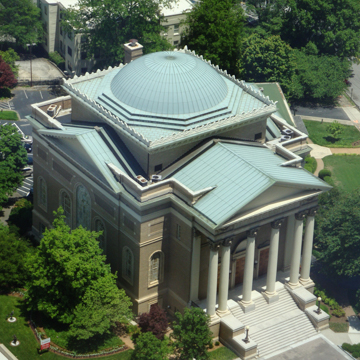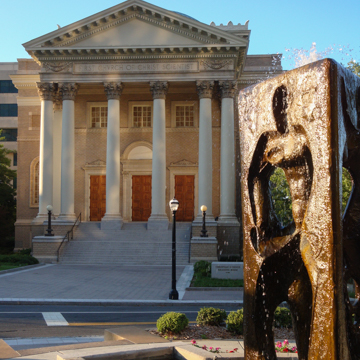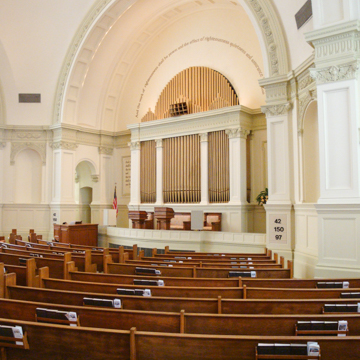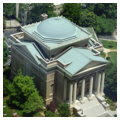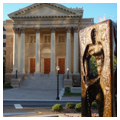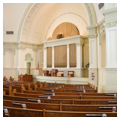An important Beaux-Arts Classical landmark in the city, First Church of Christ, Scientist, Atlanta still dominates its Peachtree Street site at the entry to Ansley Park, an early-twentieth-century automobile suburb. The church orients its colossal portico toward the southwest, forming a forty-five-degree angle to Peachtree Street. When built, the church stood virtually alone, well outside the city center, serving both as an accent to the entry into Ansley Park and as a prominent institutional building along the northern section of Atlanta’s principal residential avenue. This section of Peachtree Street would see remarkable changes in the years to come, beginning with the completion in 1919 of the First Presbyterian Church a few blocks north and continuing five years later when Harriet Harwell Wilson High donated her nearby Tudor Revival mansion to the Atlanta Art Association to serve as an art museum. As the city grew up around it, the monumental Christian Science church maintained its noble presence amidst traditional and modern architecture alike.
Like many other Beaux-Arts buildings of the period, the Christian Science church features a pair of colossal columns on a giant entrance portico. The portico addresses the pedestrian, inviting one up the grand staircase to three massive entry doors and into the great domed auditorium. But the Pantheon-inspired dome also addresses the city, declaring the church, this new denomination among Christian faiths, to be a conservative and traditional contributor to the urbanity and religious life of the city.
The domed auditorium space was designed by Edward E. Dougherty and Arthur Neal Robinson Sr. to address the functional needs of this congregation. The Christian Science denomination avoids liturgy and religious ritual and conducts services with lay readers rather than ordained ministers. Some services include testimonies from the auditorium floor by members of the congregation. There is no choir, although hymns are sung at all services, and Sunday services include a solo performed from the readers’ platform to organ accompaniment. All of this is served by the auditorium layout, which emphasizes the sharing of spoken word under the great dome of the centralized plan. This brings focus to the individual communicants, members of a democratically organized gathering who join together weekly to listen to the readings and testimonies of fellow congregation members. In Christian Science churches, the basilican-plan church with nave and separate chancel was almost always rejected in favor of a simple meeting hall, a Colonial Revival chapel, or a more urbane, classical city church. For the first Christian Science churches erected in major cities, as here, a more monumental Beaux-Arts Classical church was not uncommon, and First Church of Christ, Scientist, Atlanta, remains today one of the best examples in the city.






